In this post, I will break down everything you need to know about the customer health score, why it's essential, and how to track it and ensure your customers stick around.
Jump ahead:
- Customer Health Score
- Why Is Customer Health Score Important?
- How to Calculate Customer Health Score
- Customer Health Score Examples
- Healthy customers are happy customers.
Customer Health Score
A customer health score is a metric that helps you gauge a customer’s likelihood to stick around or churn. It’s a powerful metric for identifying loyal customers and those at risk of churn, which allows you to prioritize your service outreach accordingly.
Customer health score metrics vary by industry, and how you calculate them for your company will depend on the customer behavior metrics that you find most valuable.
Common metrics used to inform customer health score include:
- Product usage.
- Customer feedback.
- Marketing engagement.
- Website activity.
- Customer support cases.
- Product upgrades and renewals.
- Community participation.
Why Is Customer Health Score Important?
The customer health score tells you where a customer falls on your customer retention scale. Healthy customers are more likely to stay, while unhealthy customers are at risk of churning. Establishing a customer health scoring system is important because it allows you to identify unhappy customers before it's too late.
When a customer's health score falls below the threshold, I view it as an opportunity to delight. Not only does the customer health score identify customers who need my attention, but it also reveals patterns across my customer base that I can use to address customer health proactively.
“If churn is a major issue in your business today — or if you are trying to keep that from being the case — it’s critical to view churn for what it is: a symptom of a deeper, underlying disease,” shares Customer Success Expert Lincoln Murphy.
I think he succinctly reveals the ethos of the customer health score and why it’s important with the above quote. Of course, customers leaving isn’t great. However, it is crucial to pinpoint the underlying issue that is causing the churn, and not just obsess over the churn numbers themselves.
Pro tip: Identifying loyal customers using customer health scores is equally valuable. Loyal customers spend 31% more and provide the highest quality leads, according to 66% of salespeople. Loyal customers are also likely to share positive reviews and advocate for your brand online.
→ Make Data-Driven Decisions: Download HubSpot’s Customer Service Metrics Calculator for insights on retention and loyalty metrics.
How to Calculate Customer Health Score
Customer health scoring is a five-step process.
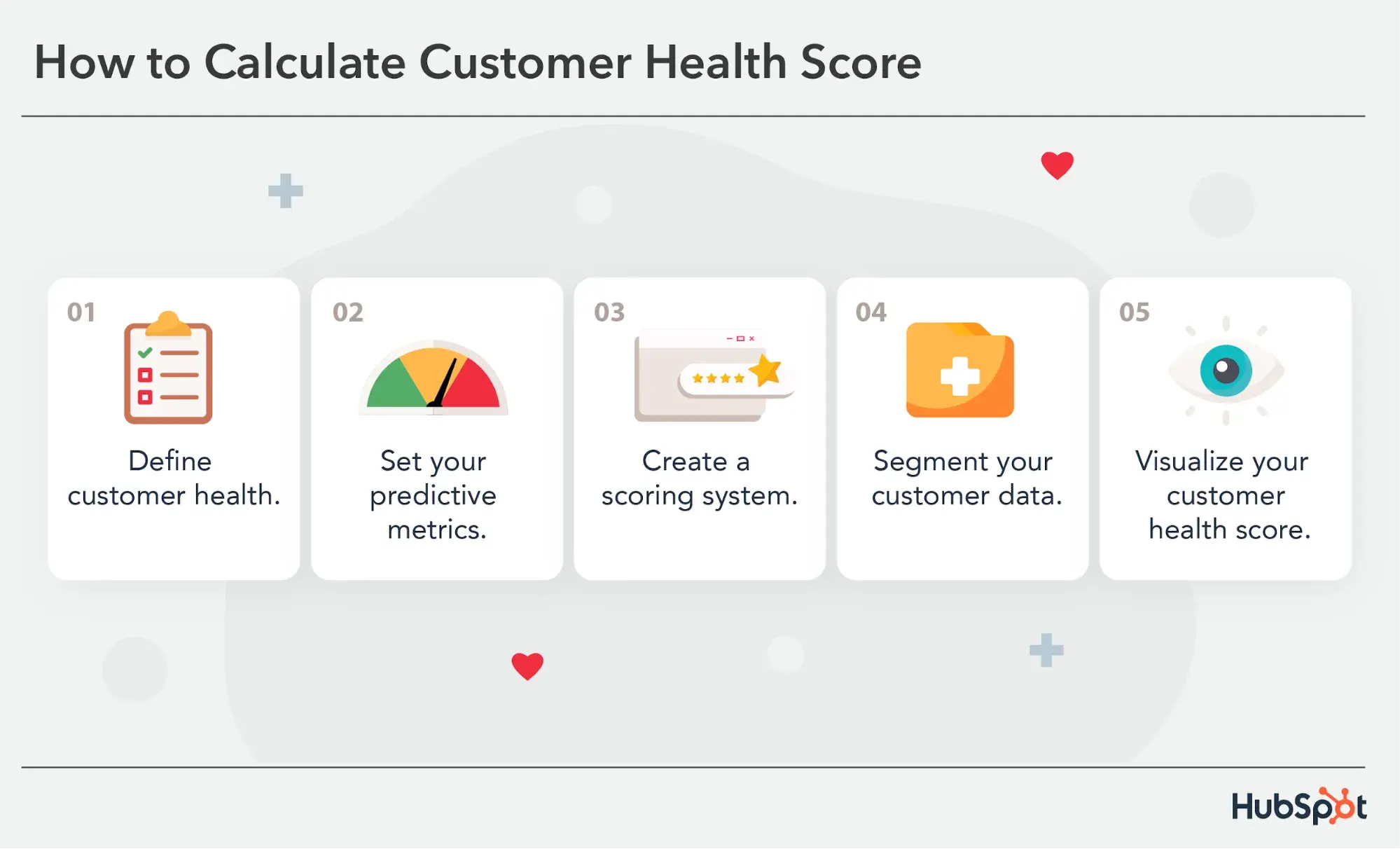
Let's review each step below.
1. Define customer health.
The first step is to decide what a “healthy” customer looks like for your business. This will be unique to your business and the products/services you offer. For example, my business is my band, Juice. For me, a happy customer streams our music consistently online, interacts with social media posts regularly, and buys tickets to our shows.
Defining customer health means setting clear goals for how you’d like your ideal customers to behave. Once you’ve done so, you can examine the metrics that determine customer health.
“When it comes to customer-centricity, I think that the biggest obstacle is the lack of empathy.” I love this quote from strategy expert Jeffrey Eisenberg because it reveals the main pillar of customer health. If you have genuine empathy for your customers and an authentic desire for them to succeed, prioritizing their health will come second nature.
Pro tip: Talk to your customer success and support teams to learn about your healthiest and unhealthiest customers. As a former support rep at HubSpot, I can attest that service teams have a valuable pulse on customer health since they work directly with them on the front lines.
2. Select your predictive metrics.
Choose metrics that indicate a customer’s likelihood to continue using your product. For example, if you run a SaaS company, product usage statistics are likely a top indicator of customer success. Some examples of product usage statistics are:
- Logins.
- Session frequency.
- Session length.
- Feature utilization.
- Renewal rates.
- Product upgrades.
Pro tip: Be proactive in encouraging customer health by implementing customer success strategies, including a customer loyalty program.
3. Create a scoring system.
Assign points to customer behaviors based on their negative or positive impact. For example, you might add points if a customer logs into your product daily for a week, but you’ll subtract points if they submit negative feedback or haven’t logged in for an extended period.
Unfortunately, I can’t give you a hard and fast formula for customer health scoring because my customers’ needs and behaviors will differ from yours. However, I recommend starting by listing all the positive and negative customer behaviors you can track and determining which are most impactful.
Pro tip: Analyze the behavior of your loyal customers and power users to determine the behaviors most correlated with customer success in your business.
4. Segment your customer data.
Once you’ve determined your key customer health score metrics and set up a scoring system, it's time to collect data and segment your customer health scores into ranges. I recommend a “traffic light” approach: green for healthy customers, yellow for customers to monitor, and red for those who need urgent attention. You might consider segmenting the top 25% of customers as “healthy,” the middle 50% as “in need of monitoring,” and the bottom 25% as “at-risk.”
5. Visualize your customer health score.
The final step is visualizing your score so everyone on your team can easily determine an individual customer‘s or account’s health. I recommend choosing a visualization that is simple and easy for everyone to interpret, such as color coding or a simple percentage. I find that having a visual component to the customer health score helps teams spot at-risk customers in real time and act quickly. I’m a big fan of HubSpot’s visualization of customer health score, seen below:
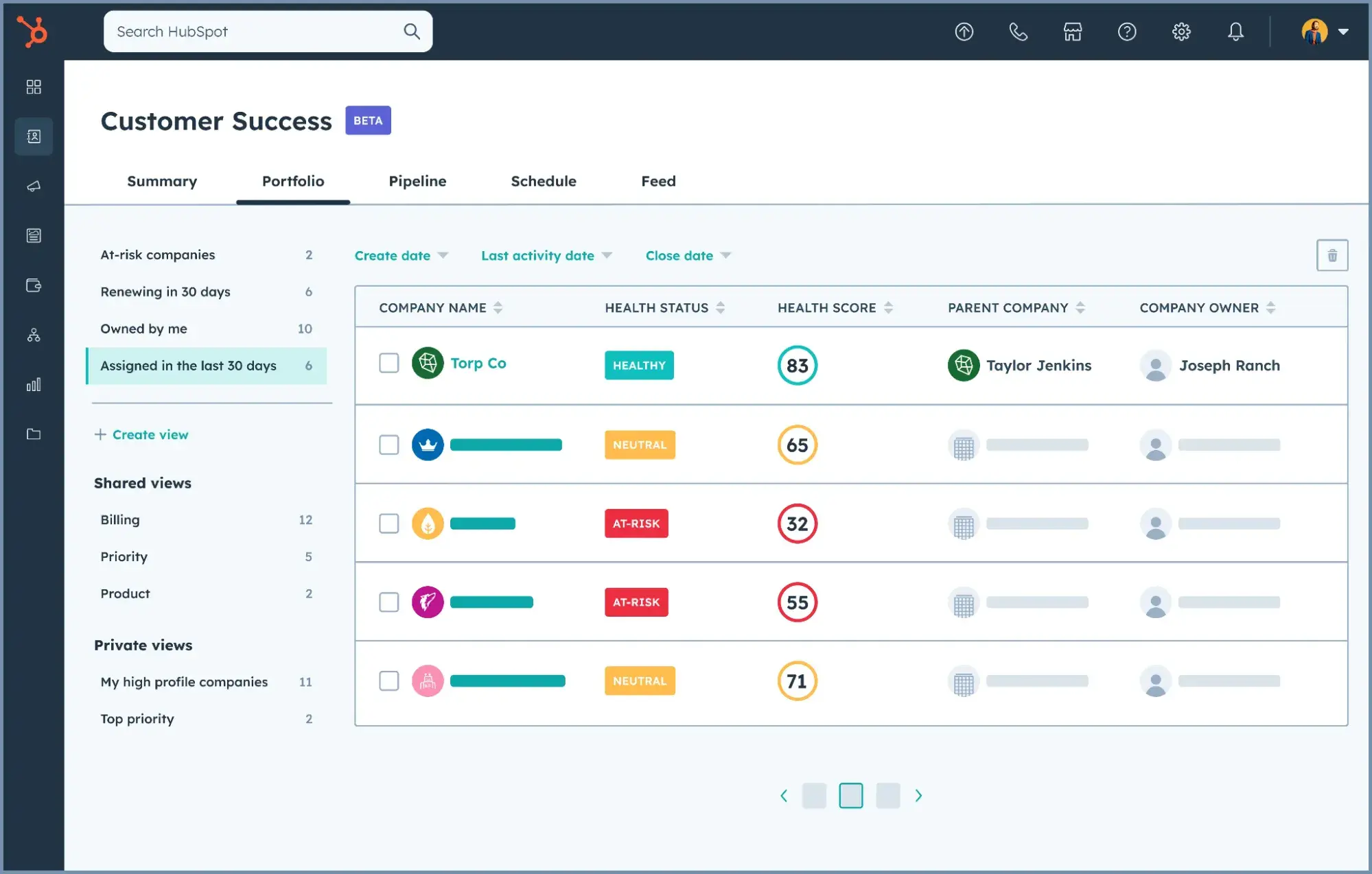
HubSpot’s Customer Success Management tools can instantly get you started with customer success scores.
Customer Health Score Examples
Customer health scoring can be represented in a variety of different ways. Here are a few examples.
Percentage Scale

This is a relatively straightforward system that most businesses can use. Rather than totaling an overall average, scores are gathered from different categories, each with an assigned value. That way, significant events like a product upgrade can hold more weight than minor actions.
Color Code
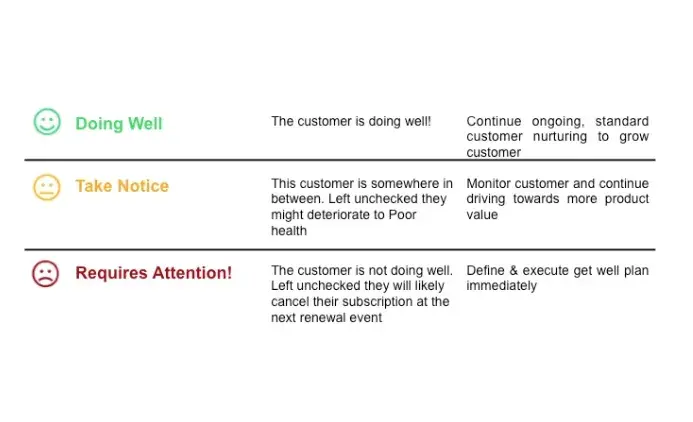
Color coding is simple but effective. I like that team members can quickly assess customer health and pay attention to the accounts needing it. Timing is everything in customer service — those extra seconds make the difference between keeping and losing a customer.
Alphabetical Scale
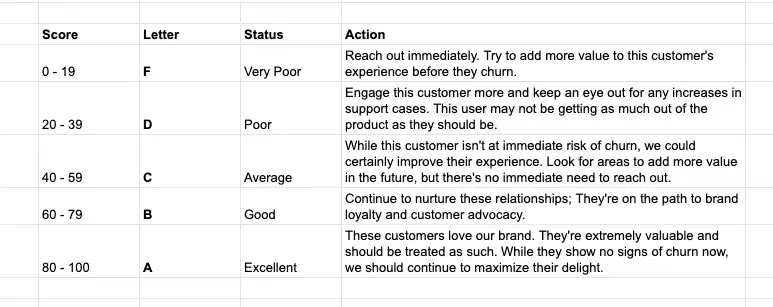
We’ve all had those anxiety dreams of being back in school and having to take an exam for a class we forgot to attend. This is like that but for customer health scores. I'm just kidding, but an alphabetical scale is just like you are used to seeing in academia, with letter grades assigned on a progressive scale based on a numerical score.
Ranking Scale
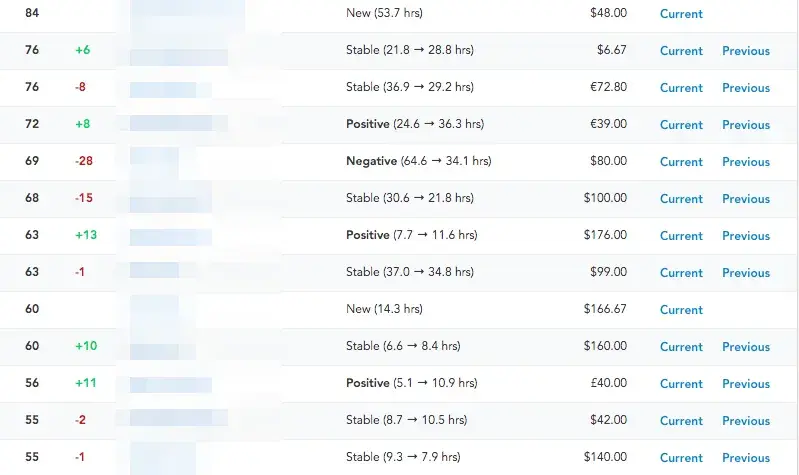
Another option is to use a numerical ranking scale that places your healthiest accounts at the top. It’s like a VIP list of your most satisfied and loyal customers, which I find invaluable for prioritizing customer relationships and outreach. On average, 65% of a company’s revenue comes from approximately 8% of its most loyal customers, so I think a customer health score ranking system is an effective way to nurture your most valuable client relationships.
That said, repairing relationships with at-risk customers is just as important as maintaining relationships with superstar accounts. Accordingly, I recommend using a variety of customer health score visualizations for the most holistic perspective on customer health.
HubSpot’s customer success management tools make it easy to get a high-level perspective on customer health, with multiple built-in visualizations and charts available right out of the box.
Healthy customers are happy customers.
Striving for customer satisfaction is one of the most impactful things you can do for your business. It seems like a no-brainer, but working on this article has solidified that point for me. Customer health scores are an excellent tool for keeping your eyes on the prize of customer health, but the real takeaway is the power of proactive customer engagement.
“Not every experience you create for your customers will be exceptional, no matter how hard you try. But the point is that you try. Nobody is perfect, and things can go wrong. That’s okay. It’s how you fix it that makes the difference.” Customer service expert Shep Hyken hits the nail on the head better than I ever could. It’s impossible to optimize customer health at every single juncture, but what matters is cultivating a culture of continually striving for it.
As famed management consultant Peter Drucker once said, “Culture eats strategy for breakfast.”
Customers want to feel engaged and valued, and the best way to achieve that, in my opinion, is through genuine, proactive interactions with your customer-facing teams. Customer health scores will help reveal customers who are thriving and those who are at risk, but that data is only as valuable as the actions you take to support and uplift your customers.
Editor's note: This post was originally published in June 2020 and has been updated for comprehensiveness.
Customer Success
.png?width=112&height=112&name=Image%20Hackathon%20%E2%80%93%20Vertical%20(85).png)

.png)

![How To Write a CSM Resume [+ Free Templates]](https://53.fs1.hubspotusercontent-na1.net/hubfs/53/customer-success-manager-resume-1-20241031-2293336.webp)







